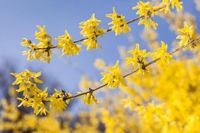The vernal equinox on March 20, 2025, at 11:01 AM (Eastern European Time), is not just a moment marked on calendars; it’s a significant event symbolizing the balance between day and night as nature awakens and warmth returns. This astronomical phenomenon, where day and night are each approximately 12 hours long, has deep historical, cultural, and spiritual roots, particularly in relation to the ancient goddess Eostre and the Christian holiday of Easter.
The term "equinox" is derived from the Latin word "equinoxium," meaning "equality of day and night." This special day heralds the beginning of astronomical spring, impacting not just agriculture but also myriad cultural traditions. In 2025, as in years past, the equinox is expected to capture the attention of many as they recognize the return of longer days and the beauty of blooming life.
Historically, Eostre is recognized as the ancient Germanic goddess associated with dawn, spring, and new life. The celebration of the equinox in her honor facilitated the transition of these customs into Christian traditions, especially the celebration of Easter, which is intrinsically linked to the themes of resurrection and renewal. Bede the Venerable, an Anglo-Saxon monk from the 7th–8th century, was one of the first to document Eostre, describing how festivals were held in her name, which later transformed into the Christian Paschal celebrations.
In 2025, as the sun crosses the celestial equator, creating this equilibrium, one can reflect on how vital such transformations and balances are in the broader tapestry of human experience. Many cultures and traditions have cultivated unique celebrations for the vernal equinox, marking it as a time of new beginnings. In Ukraine, for example, the equinox corresponds with the Feast of St. Forty Martyrs, illuminating the blend of ancient traditions and modern religious practice.
From a scientific perspective, the vernal equinox occurs due to the Earth's tilt and orbit around the sun. This year, the time of the equinox at 11:01 AM (EET) reflects the precise moment when the sun is exactly above the equator, creating equal day and night lengths in both hemispheres. Interestingly, depending on the Earth's orbit, the date and time when the equinox occurs can shift. For instance, predictions indicate the next occurrence on March 21 will take place in 2102, while an earlier occurrence is anticipated on March 19 in 2044.
Various cultural rituals surrounding the equinox reflect a blend of ancient customs and modern practices. The Babylonians, for instance, marked the beginning of their year with the first full moon following the vernal equinox—a custom that echoes in many traditions today. Notably, in China, a unique challenge persists on this date where individuals attempt to balance an egg upright, symbolizing the balance of the equinox.
In Ukraine, traditions have persisted through centuries, with remnants of pagan customs intertwined with Christian celebrations. For many, this day is recognized as a time for reflection and renewal. Customs such as baking symbolic pastries or engaging in community celebrations are infused with the hopeful energy of spring. As children run through villages with representations of spring in hand, it illustrates the communal joy and collective belief in renewal that the season brings.
As the equinox symbolizes not only astronomical balance but also reflects the intricate web of human consciousness regarding growth and change, individuals worldwide seize this moment to initiate new projects, cleanse their spaces, and purify their spirits. Modern interpretations continue to highlight themes of environmental awareness and sustainability as communities strive to embrace the flourishing Earth around them.
The upcoming vernal equinox in 2025 will serve as a solemn reminder of the interconnectedness between celestial events and earthly traditions. It is a chance for people worldwide to celebrate renewal and awakening amidst the cyclical nature of life. As individuals honor these ancient customs, they simultaneously acknowledge the continuous growth and seasonal transition, transcending their significance into the realms of modern spirituality and holistic living.
Ultimately, the vernal equinox is more than just an astronomical event. It ties together the threads of ancient customs, religious beliefs, agricultural practices, and scientific understanding, encouraging a holistic view of life’s cyclical nature. In recognizing this, communities are empowered to embrace not only the promise of spring but the potential for growth and renewal in their own lives.



